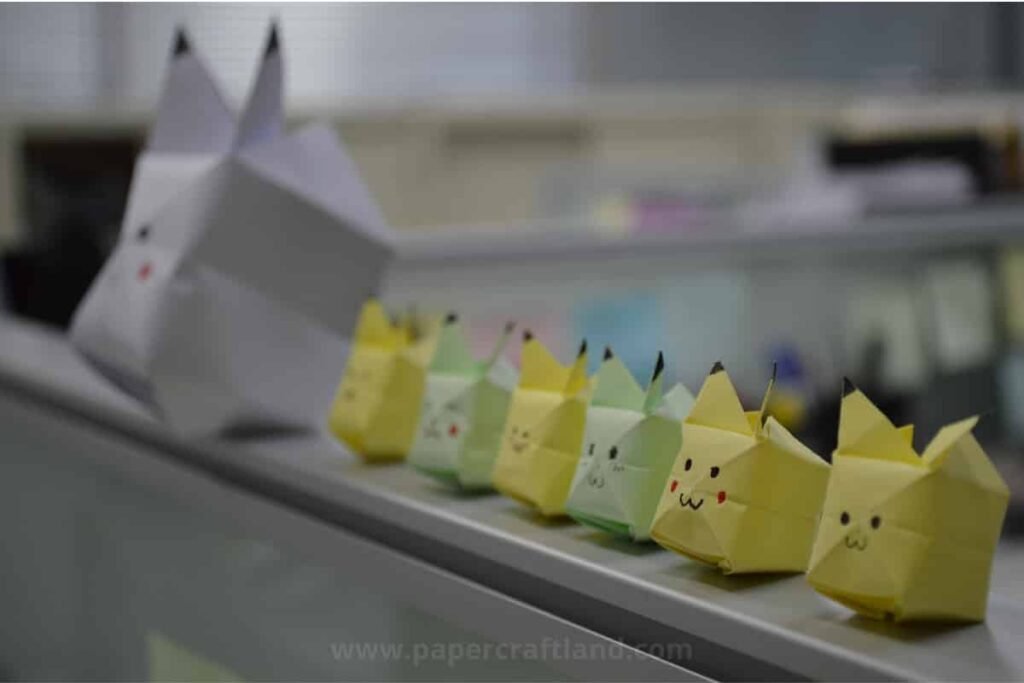Introduction
Unit origami, a form of modular origami, captures the imagination through its intricate geometric designs and endless possibilities.
Unlike traditional origami, which typically uses a single sheet of paper to form a figure, unit origami involves creating multiple identical units or “modules” that are assembled into a larger structure without the use of glue or adhesives.
This unique approach combines art and science, offering enthusiasts a fascinating way to engage with geometry, patience, and creativity.
- Introduction
- What is Unit Origami?
- Historical Background of Unit Origami
- How Unit Origami Differs from Traditional Origami
- Basic Concepts and Techniques in Unit Origami
- Popular Types of Modular Origami Designs
- Step-by-Step Guide to Creating a Simple Unit Origami Design
- Advantages and Benefits of Practicing Unit Origami
- Advanced Techniques and Notable Designs in Unit Origami
- Examples of Famous Unit Origami Artists and Their Works
- Applications of Unit Origami Beyond Art
- Conclusion
- FAQs
What is Unit Origami?
Unit origami, also known as modular origami, is a technique where several folded paper units are combined to create a larger, often complex structure.
Each piece, or “unit,” is identical in size and shape, designed to interlock and form intricate shapes that can range from simple geometric figures to elaborate polyhedra.
Unlike standard origami, which involves folding a single sheet into a standalone figure, unit origami allows creators to build highly detailed designs that demonstrate symmetry and dimension.
In essence, unit origami blends simplicity and complexity: a straightforward folding sequence can yield a single unit, yet combining numerous units in strategic ways results in stunning, multidimensional forms.
Historical Background of Unit Origami
Unit origami has deep roots in Japanese culture, dating back hundreds of years as an evolution within the larger tradition of origami. The concept of modular folding is believed to have existed in Japan for centuries, influenced by Zen principles of symmetry, balance, and patience.
Over time, artists like Mitsonobu Sonobe developed unique modular techniques that have since become cornerstones in origami. The “Sonobe unit,” one of the most widely used modular folds, is named after Mitsonobu Sonobe and is renowned for its versatility in creating polyhedral shapes.
Western interest in modular origami began to grow in the mid-20th century, with origami masters like Tomoko Fuse bringing attention to its creative potential. The modular approach has since expanded globally, merging traditional Japanese aesthetics and modern, geometric interpretations.
How Unit Origami Differs from Traditional Origami
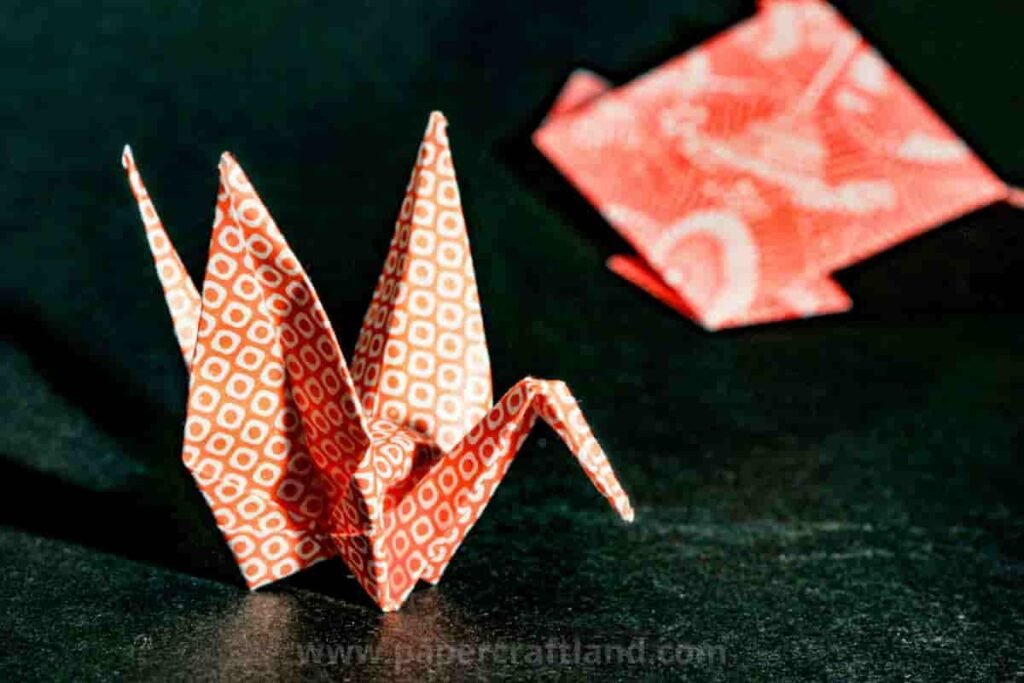
The main distinction between unit origami and traditional origami lies in the number of paper pieces and the structural complexity of the designs. Traditional origami typically involves folding a single sheet into a recognizable shape, like a crane or flower.
In contrast, unit origami requires multiple identical pieces that are later assembled to create a complex whole. This modular structure means sturdier forms can be achieved without using adhesives or cutting the paper.
- Structural Complexity: Unit origami can produce larger, more intricate designs due to its modular nature.
- Interlocking Design: The units must interlock precisely, adding a layer of challenge and strategy to the craft.
- Time-Intensive: Assembling numerous units can be a lengthy process, making it ideal for those who enjoy detailed, patient work.
Basic Concepts and Techniques in Unit Origami
Unit origami hinges on the creation of a “unit” or “module” that serves as a building block. Each module is usually folded from a square piece of paper, although other shapes are sometimes used depending on the design.
Learning the folding sequence for a particular unit is fundamental, as consistency across units is key for successful assembly.
Common techniques in unit origami include:
- Symmetrical Folding: Ensuring each fold aligns perfectly, as symmetry is crucial for the final design.
- Precision and Uniformity: Folding each unit precisely so that they are uniform, ensures stability and aesthetic balance.
- Assembly Techniques: Specific methods for interlocking units, such as inserting flaps into pockets, help create a cohesive structure.
Popular Types of Modular Origami Designs
There are numerous designs in modular origami, each with unique visual appeal and folding techniques. Among the most popular types are:
- Sonobe Units: One of the simplest and most versatile modular designs, used to create cubes, octahedrons, and other polyhedral forms.
- Kusudama: Traditionally used for decoration, these floral-like structures are often spherical and were created by stringing together smaller, folded flowers.
- Fractal and Tessellation Patterns: Advanced designs that repeat patterns in a fractal style, requiring extensive precision and large numbers of units.
Each of these designs requires a different approach and level of expertise, making modular origami accessible for beginners and advanced folders alike.
Step-by-Step Guide to Creating a Simple Unit Origami Design

For those new to unit origami, starting with a basic modular design like the Sonobe unit can provide a perfect entry point into this art.
Materials Needed for Unit Origami
You’ll need the following basic materials:
- Paper squares: Ideally, thin origami paper (commonly 6×6 inches or smaller) as it folds easily without creating bulk.
- Bone folder (optional): To sharpen creases and improve precision.
- Tweezers (optional): Useful for assembling very small units.
Using origami-specific paper is advantageous, as it is designed to hold folds without tearing. However, regular paper can also be used if cut to the appropriate size.
Step 1: Folding Your First Unit
- Start with a square piece of paper.
- Fold in half horizontally and vertically, then unfold. This creates reference creases.
- Bring each corner to the center to form a smaller square.
- Fold in half again horizontally and vertically to create a distinct cross pattern.
- Repeat the fold sequence until you have a structured unit with flaps and pockets.
Step 2: Creating Multiple Units for Assembly
To assemble a basic polyhedron, you’ll need multiple units – often in groups of six, twelve, or more depending on the design.
- Uniformity: Aim to keep each unit’s size and folds identical.
- Patience: Folding numerous units can take time, so work steadily to ensure quality.
Step 3: Assembling the Units
When assembling, start by inserting flaps from one unit into the pockets of another, aligning the edges to create stability. This step can be tricky, especially when working with many units, so proceed slowly and carefully.
- Begin with two units and interlock their flaps.
- Continue adding units by interlocking, forming the desired shape.
- Check stability as you go, adjusting units to keep the structure balanced.
Finishing Touches and Enhancements
Once the structure is complete, you can add a few creative touches:
- Add colors and patterns: Colors for each unit can create a vibrant, mosaic-like effect.
- Experiment with textures: Try using recycled or textured paper for unique aesthetics.
Advantages and Benefits of Practicing Unit Origami
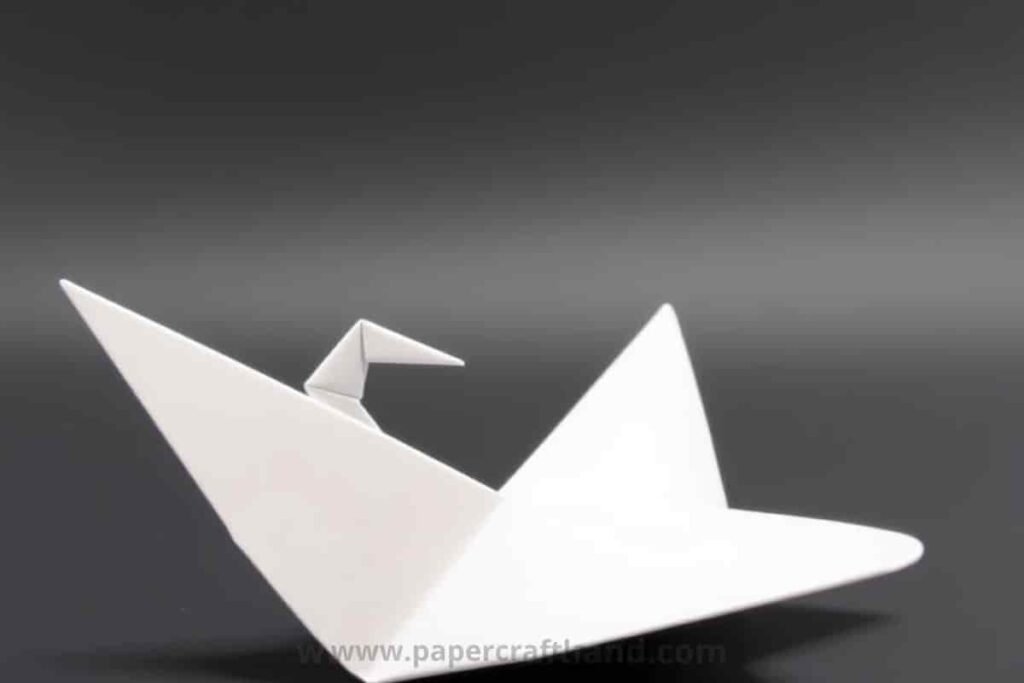
Unit origami offers numerous personal and cognitive benefits, making it a popular hobby for people of all ages.
Developing Patience and Precision
Assembling a modular structure requires repetitive folding and attention to detail, which can improve one’s ability to focus and cultivate patience.
Building Spatial Awareness and Geometry Skills
Unit origami introduces geometric concepts in a hands-on way, enhancing one’s understanding of polyhedra, symmetry, and spatial relationships. This type of engagement is beneficial for children and adults alike, as it makes geometry feel accessible and practical.
Therapeutic and Relaxing Qualities of Modular Folding
In other crafting activities, unit origami has therapeutic qualities that can reduce stress and promote relaxation. The repetitive motion of folding and assembling units has a meditative effect, offering a break from daily stressors.
Creating Community Connections Through Unit Origami
Origami enthusiasts often gather in online forums, workshops, and local groups, sharing tips and showcasing designs. This social aspect encourages learning, collaboration, and the celebration of creativity within a community.
Sustainability and Eco-Friendly Art
With its minimal material needs, unit origami is an eco-friendly activity. Many practitioners use recycled paper or scrap materials, turning everyday waste into beautiful art.
Advanced Techniques and Notable Designs in Unit Origami
For those looking to explore more challenging projects, advanced techniques involve creating complex geometric models and experimenting with color patterns.
Exploring Advanced Geometric Models
Some of the most challenging modular projects include creating polyhedra like the icosahedron or dodecahedron, requiring hundreds of units.
Introducing Color and Pattern Variations
Using colors strategically can add dimension to a piece, emphasizing certain angles or creating optical illusions within the pattern.
Examples of Famous Unit Origami Artists and Their Works
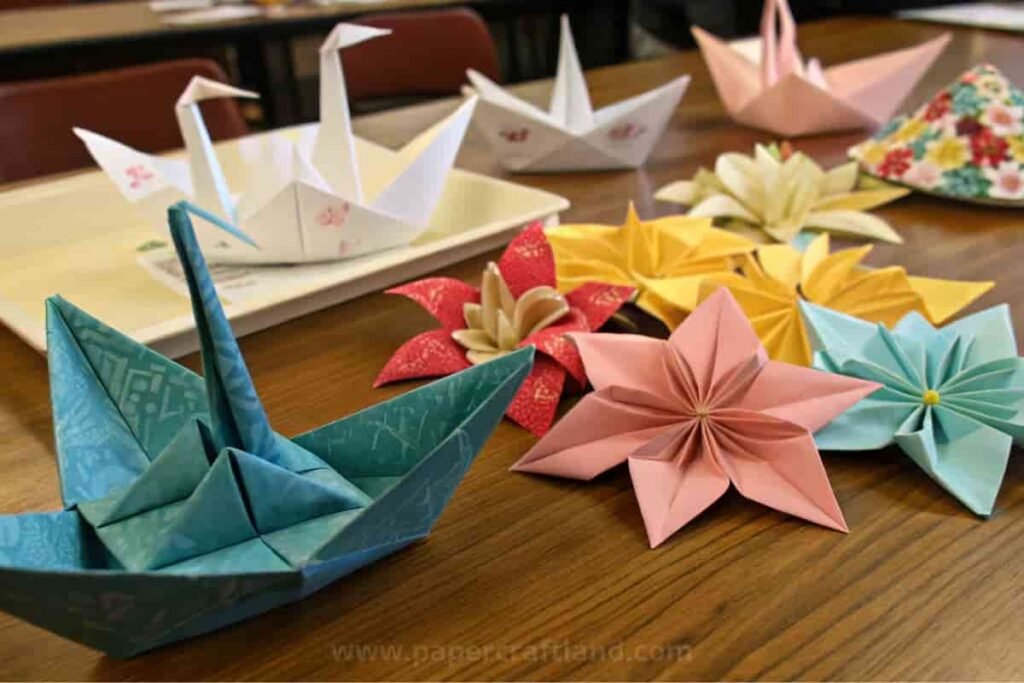
The world of unit origami has been shaped by several influential artists, each contributing unique styles, techniques, and designs that have inspired generations. Here’s a look at some of the most notable artists in modular origami, along with their impactful works.
- Tomoko Fuse
Tomoko Fuse is a Japanese origami artist known as one of the pioneers of modular and unit origami. She has written numerous books that popularize the art form and guide enthusiasts in creating complex, geometric designs.
Fuse’s works often explore the aesthetics of mathematical shapes, blending artistry with geometry in ways that feel both intricate and elegant. Some of her well-known works include:
- Kusudama and Polyhedral Models: Fuse’s kusudama balls, often formed by connecting floral-like modules, have become a staple in modular origami and are celebrated for their symmetry and balance.
- Books like “Unit Origami: Multidimensional Transformations”: Her books have introduced many to modular origami and continue to be a go-to resource for those looking to advance their skills.
Fuse’s approach to origami is both educational and artistic, encouraging others to explore modular designs that showcase the beauty of geometric patterns. Her legacy has expanded modular origami’s appeal worldwide, making it accessible to people of all skill levels.
- Ekaterina Lukasheva
Ekaterina Lukasheva, a contemporary Russian origami artist, is celebrated for her intricate, symmetrical designs and striking use of color and pattern.
Her work often features tessellations and highly geometric patterns, which require immense precision and planning. Lukasheva’s designs showcase the potential of modular origami to create elaborate, lace-like structures that emphasize.
- Geometric and Floral Models: Lukasheva’s models combine advanced folding techniques with decorative flair, often creating spheres and stars with mesmerizing symmetry.
- Books like “Kusudama Origami”: Her publications provide step-by-step instructions for building complex models, inspiring many to attempt advanced modular folding.
Her work is marked by a unique, almost hypnotic quality, where repeated patterns draw the viewer’s eye, reflecting both the meditative and architectural aspects of modular origami.
- Meenakshi Mukerji
Indian-American origami artist Meenakshi Mukerji is known for her exploration of symmetry and innovation in modular origami. Mukerji’s work often combines different modular techniques to create new forms, using a wide variety of units to achieve complex, interlocking designs.
Her influence has extended through her books, which offer detailed instructions on constructing models that blend simplicity and complexity.
- Stars and Polyhedral Designs: Mukerji’s models focus on creating elegant star-like structures and polyhedral shapes that appear as natural extensions of the paper.
- Books like “Marvelous Modular Origami”: Her publications encourage creativity, providing readers with variations on classic models and encouraging experimentation.
Mukerji’s approach to modular origami is innovative and instructional, inviting readers to think beyond traditional forms and explore how various units can work together harmoniously.
- Mette Pederson
Mette Pederson, a Danish origami artist, has made significant contributions to modular origami, particularly in developing star-themed designs.
Known for her festive and decorative creations, Pederson’s work frequently showcases intricate star patterns, which have become popular in traditional origami and holiday decorations.
- Origami Stars: Pederson’s star models are celebrated for their versatility, often created with a festive flair that makes them popular for seasonal decorations.
- Workshop and Educational Contributions: Pederson shares her techniques widely through workshops, helping spread the practice of modular origami in Europe and beyond.
Pederson’s designs are accessible yet visually striking, encouraging beginners to explore modular origami while adding a decorative and celebratory quality to the art form.
- Rona Gurkewitz and Bennett Arnstein
The collaborative efforts of Rona Gurkewitz and Bennett Arnstein have brought attention to modular origami as a bridge between art and mathematics.
Their work often explores the mathematical foundations of origami, using it to teach complex concepts through accessible paper-folding techniques.
- Mathematical Polyhedra: Their models highlight the connection between origami and mathematical theory, often used in educational settings to introduce geometry and spatial reasoning.
- Books like “Beginner’s Book of Modular Origami Polyhedra”: Their publications guide readers through the construction of polyhedral models, making modular origami a tool for visualizing mathematical principles.
Their approach demonstrates how origami can serve as an educational tool, particularly for visual learners, and their contributions have enhanced the use of origami in STEM education.
Each of these artists has expanded the boundaries of unit origami, using creativity and precision to transform simple folds into stunning geometric art.
Their works highlight the diversity within modular origami, from intricate stars to educational polyhedra, showcasing how this art form can intersect with science, education, and cultural tradition.
- Mitsonobu Sonobe
Mitsonobu Sonobe is credited with the creation of the Sonobe unit, one of the most widely recognized and versatile modular origami units. The Sonobe unit is foundational for creating a variety of polyhedral structures and is frequently the starting point for newcomers in modular origami.
Sonobe’s contributions laid the groundwork for modular origami as a distinct field, giving rise to an array of three-dimensional shapes built solely from folded units.
- The Sonobe Unit: This simple yet powerful design has inspired countless modular origami projects, from basic cubes to complex polyhedra like icosahedrons and dodecahedrons.
- Polyhedral Constructions: Using Sonobe units, artists can create expansive, multi-faceted designs that range in complexity, showing the adaptability and depth of Sonobe’s original concept.
Sonobe’s contribution is fundamental to modular origami, providing a versatile building block that has spurred innovation across generations of artists.
Applications of Unit Origami Beyond Art
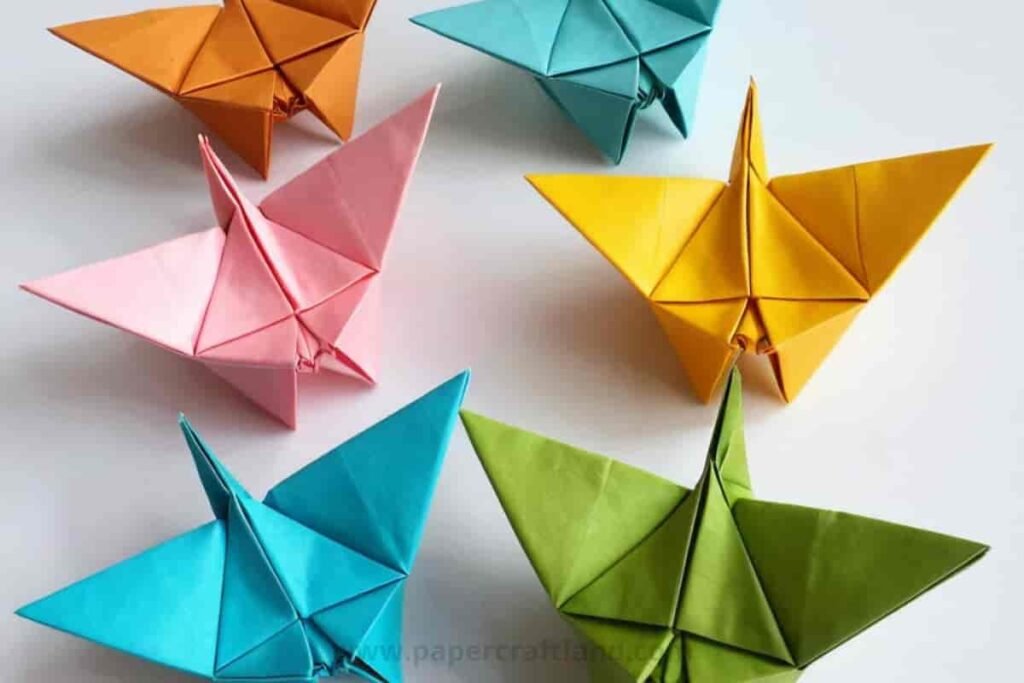
Unit origami has evolved far beyond an art form, finding practical applications in various fields such as mathematics, engineering, architecture, and space exploration.
The mathematical principles underlying modular origami – like symmetry, spatial awareness, and geometric transformations – make it a valuable tool for solving complex structural and design challenges. Here’s a closer look at some of the fascinating ways unit origami is applied beyond its artistic roots.
- Mathematics and Geometry Education
One of the most prominent applications of unit origami is in education, particularly for teaching concepts in mathematics and geometry.
Because modular origami naturally involves creating and assembling geometric shapes, it provides a hands-on way for students to explore abstract mathematical ideas.
- Polyhedral Models: By creating polyhedra (like cubes, tetrahedrons, and dodecahedrons) with paper modules, students can see firsthand how 3D shapes are constructed from 2D surfaces.
- Understanding Symmetry and Patterns: Unit origami offers an engaging way to visualize symmetry, rotational movement, and repeating patterns, which are foundational concepts in both math and art.
- Fractals and Tessellations: More advanced modular origami can be used to demonstrate fractals and tessellations, introducing students to complex, recurring patterns in nature and mathematics.
Using origami in education is an interactive approach that makes learning more tangible and helps students retain concepts, making it popular in STEM classrooms around the world.
- Structural Engineering and Architecture
Engineers and architects have started to look to modular origami for inspiration when designing foldable, lightweight, and strong structures.
The principles of unit origami – creating stable structures from interlocking units – are directly applicable to architecture and materials science, especially in creating compact structures that expand when needed.
- Deployable Structures: Inspired by origami, engineers have designed structures that fold for easy transport and can expand on-site. These have potential uses in disaster relief, temporary shelters, and space habitats.
- Lightweight Materials: Modular origami structures distribute weight evenly and can bear significant loads without heavy materials, making them useful for lightweight designs in construction and product design.
- Flexible Architecture: Origami-inspired folding techniques allow architects to create dynamic, adaptable spaces that change according to needs, such as buildings that can expand or collapse depending on occupancy or environmental conditions.
These architectural applications are becoming more feasible as technology advances, making origami an innovative inspiration for sustainable and adaptable design.
- Medical Devices and Health Technologies
Unit origami principles are increasingly finding applications in the design of medical devices, particularly in areas where small, flexible, and biocompatible tools are needed.
Origami-inspired folding structures allow for minimally invasive solutions, making it possible to insert compact devices that expand once in place.
- Surgical Stents and Implants: Origami-inspired designs allow stents and other implants to be folded into tiny forms that can be placed in the body through small incisions and then expanded to the necessary size.
- Drug Delivery Systems: Modular origami structures are being explored for drug delivery devices that can fold and unfold in response to body temperature or pH, releasing medications in controlled ways.
- Medical Robotics: Origami-inspired folding allows for the development of tiny robots or tools that can navigate the human body for procedures, diagnostics, or drug delivery, providing more precision in minimally invasive surgeries.
These applications demonstrate the potential of origami-based design to create groundbreaking medical devices that can improve patient outcomes by making surgeries less invasive and treatments more precise.
- Space Exploration and Satellite Design
Origami-based design is helping space engineers tackle some of the biggest challenges in space exploration, such as fitting large equipment into limited cargo space.
Using unit origami’s principles of compact folding and strong interlocking designs, researchers are developing ways to launch equipment that can unfold to full size once in orbit.
- Foldable Solar Panels: Origami allows for the design of solar panels that can be tightly folded during launch and then expanded in space to provide a larger surface area, maximizing energy collection while conserving launch space.
- Deployable Antennas and Reflectors: Similar to solar panels, antennas, and reflectors can be designed to fold up compactly, saving space and reducing costs, then expand once deployed to capture signals over a wide area.
- Lightweight Space Structures: Space missions benefit from every ounce saved, and origami-inspired designs provide strong, lightweight frameworks that can unfold to create large, functional structures with minimal weight.
NASA and other space agencies have embraced origami-inspired technology for projects that require large, deployable structures, making origami a practical and valuable tool in pushing the boundaries of space exploration.
- Robotics and Artificial Intelligence
In robotics, unit origami principles are applied to develop flexible robots and machinery that can change shape or function as needed.
Origami-inspired designs allow robots to shift between different forms, enabling them to navigate complex environments and perform a variety of tasks.
- Soft Robotics: Origami principles help engineers create soft robots that fold, stretch, and bend to fit into tight spaces or handle delicate tasks. These robots are especially useful in medical fields, agriculture, and disaster recovery.
- Reconfigurable Robots: By applying unit origami methods, robots can be designed to reconfigure themselves based on the task at hand. For example, a robot could fold into a compact shape to pass through a narrow gap, then unfold to perform larger-scale tasks on the other side.
- Artificial Intelligence Algorithms: Algorithms inspired by origami folding patterns are being developed to improve robotic motion and adaptability, allowing robots to move efficiently and safely in dynamic environments.
Origami-inspired robotics offer versatile solutions for industries that require adaptability, providing robots with a greater range of movement and applications than traditional designs.
- Environmental Sustainability and Green Technologies
The concepts of minimal waste and efficient use of materials in unit origami are finding applications in environmental engineering and sustainability projects.
Origami-inspired folding techniques are used in packaging, sustainable products, and renewable energy solutions.
- Eco-Friendly Packaging: Origami-inspired designs allow for compact, sturdy packaging that uses less material and reduces waste. For example, foldable packaging that requires minimal adhesive and expands only when needed can reduce shipping volume and waste.
- Renewable Energy Structures: Solar concentrators, reflectors, and other renewable energy equipment can be designed using origami principles, allowing them to fold compactly and expand to full functionality, minimizing the space required for transport and installation.
- Water Purification Devices: Origami-based filters and water-purification units are being developed for areas with limited resources. These foldable designs make the systems portable and easy to transport, improving access to clean water in remote or disaster-hit regions.
These applications demonstrate how modular origami principles can inspire sustainable designs that are compact, reusable, and environmentally friendly.
- Fashion and Textile Innovation
In fashion and textile design, origami techniques are influencing everything from garment construction to sustainable textiles.
Modular origami designs enable clothing and accessories that can expand, change shape, or fold flat when not in use, merging style with functionality.
- Transformable Clothing: Origami-inspired folding techniques allow designers to create clothing that can be worn in multiple ways, transforming from one look to another or adjusting for different functions.
- Space-Saving Textiles: Origami folding methods are used in compressible textiles that can expand when unpacked. This has applications in outdoor clothing and gear, where portability and space-saving are essential.
- Sustainable Fabric Designs: Origami-inspired techniques, designers can create patterns that minimize fabric waste, contributing to eco-friendly fashion practices.
Origami-inspired fashion merges practicality with aesthetics, creating versatile, multifunctional garments that reflect a new approach to sustainable and adaptive design.
Conclusion
Unit origami is a captivating journey into art and geometry, blending skill and patience to produce works that are both beautiful and structurally sound.
Whether as a calming hobby, a way to learn geometry or a form of personal expression, modular origami is an enriching experience. It provides a means to engage creatively and mindfully, celebrating the elegance of simple paper transformed through human ingenuity.
FAQs
- What is the best paper for unit origami?
Thin origami paper is ideal, but any lightweight paper that holds folds well can work.
- How many units are typically needed for a design?
It depends on the complexity; simple designs may use 6-12 units, while advanced polyhedra can require hundreds.
- Is glue ever used in unit origami?
Traditionally, no glue is used, as units interlock. However, beginners sometimes use a bit of glue to stabilize larger models.
- Can beginners try unit origami?
Absolutely! Starting with a simple Sonobe unit project is beginner-friendly and helps build confidence.
- Where can I learn more about advanced unit origami techniques?
Many origami books and online tutorials offer guidance, and joining origami communities can be a valuable resource for learning advanced techniques.
- Can I use colored paper for unit origami?
Yes, colored paper adds visual interest and depth, especially in complex, multi-unit designs.
- What is the easiest shape to start with in unit origami?
The cube made from Sonobe units is one of the simplest and a great starting project for beginners.
- How long does it take to complete a modular origami project?
Simple designs can take 30-60 minutes, while larger, intricate structures may take several hours.




